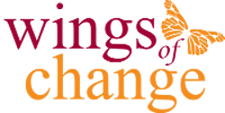The systematic review "The Use of Neurofeedback in Sports Training" explores how neurofeedback, a type of biofeedback that involves training brain waves, significantly impacts athletes' physical and mental performance. Neurofeedback training, which exercises brain waves, has shown to affect professional athletes' performance positively across various sports disciplines, such as judo, volleyball, and soccer. The review analyzed 10 scientific studies, highlighting that neurofeedback training can enhance stress management, self-control over physiological factors, behavioral efficiency, and reaction speed. This method shows promise not only in improving athletic performance but also in reducing stress and enhancing overall mental resilience, making it a valuable tool in sports psychology and training.
Sports training effectiveness often hinges on properly selected methods that balance physical and mental demands. Excessive training loads can lead to overtraining, while insufficient loads fail to yield significant achievements. Professional athletes require not only physical training to improve motor skills but also mental training to enhance concentration and stress resistance. Neurofeedback methods, such as electroencephalogram (EEG) training, have become integral in achieving high-level sports performance by supporting psychophysiological states crucial for success.
The review underscores that neurofeedback enables athletes to better control physiological processes, such as heart rate and respiration, which are typically difficult to manage. Studies have demonstrated its effectiveness in reducing stress levels, enhancing behavioral efficiency, and improving reaction times to stimuli. For example, Canadian athletes participating in the Vancouver Olympics who used neurofeedback training showed better stress control and improved results compared to previous years.
Injury prevention and rehabilitation are also areas where neurofeedback training proves beneficial. It allows for the analysis of load exerted on limbs during exercises, aiding in planning training to prevent injuries like anterior cruciate ligament (ACL) tears. Additionally, neurofeedback has been used in rehabilitation to monitor health status and assist in quicker recovery.
Moreover, unconventional applications, such as using music as a form of neurofeedback, have shown to maintain motivation during rehabilitation and improve psychomotor performance. This integration of neurofeedback in various forms highlights its versatility and effectiveness in enhancing athletic performance and mental resilience.
In conclusion, the systematic review indicates that integrating neurofeedback into regular sports training can lead to significant improvements in athletic performance and mental well-being. This innovative method holds potential for broad applications in sports and beyond, emphasizing the need for continued research to refine and optimize neurofeedback protocols for various disciplines.use this link (https://www.ncbi.nlm.nih.gov/pmc/articles/PMC10136619/) to be directed to the full article
